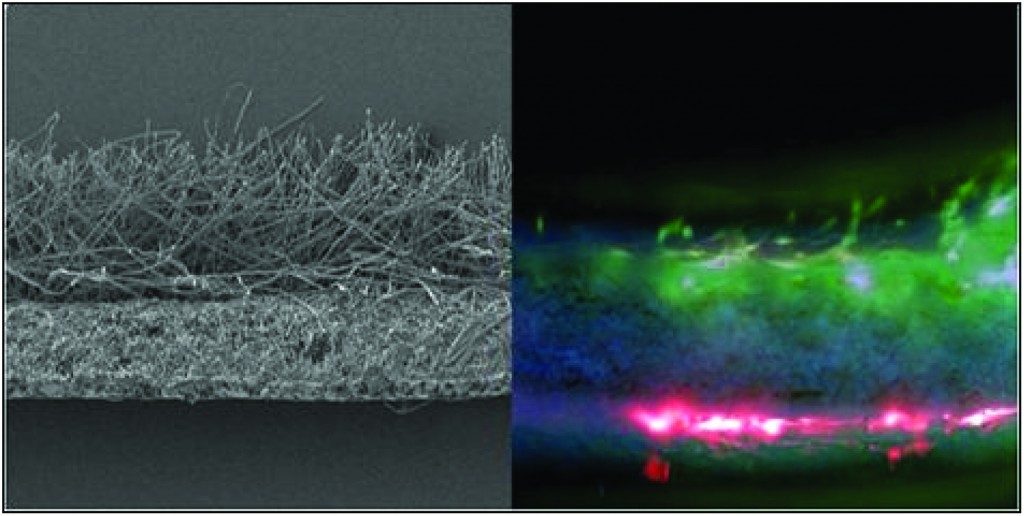The advent of regenerative medicine has begun to expand the treatment options available to patients who require tissue reconstruction due to birth defects or injuries. However, it still offers limited solutions for those patients whose wounds span multiple layers and types of tissues. This is in part due to the shortcomings of the barrier membranes that are typically implanted in order to maintain tissue layer separation. In this article, researchers from the University of Sheffield propose novel biodegradable bilayer and trilayer fibrous scaffolds that can effectively segregate tissue layers and maintain proper tissue structure during healing.
Electrospinning was used to create monolayers of microfibrous polylactic acid (PLA), microfibrous poly ε-caprolactone (PCL), and nanofibrous polyhydroxy-butyrate-co-hydroxyvalerate (PHBV). Initially, fluorescently labeled fibroblasts and mesenchymal progenitor cells (hESMP) were co-cultured on separate sides of each of the monolayer scaffolds. After seven days, cell mixing was observed on both the PLA and PCL scaffolds. However, cell segregation was still clearly evident on the PHBV scaffold, indicating that its nanofibrous structure was acting as a barrier to cell penetration.
The researchers then created bilayer membranes of PHBV-PLA and PHBV-PCL that exhibited similar barrier properties and maintained high levels of cell viability. These bilayer scaffolds were designed such that the different degradation rates of the composite polymers were comparable to the different growth rates of hard and soft tissue, thus making them better candidates for the treatment of conditions, such as cleft palate, which require bone and soft tissue segregation. Finally, a PLA-PHBV-PLA trilayer membrane was designed with the goal of supporting two different types of soft tissue growth. Subsequent results confirmed that the nanofibrous PHBV layer effectively separated the fibroblasts and keratinocytes that were cultured in the two PLA layers.
Ultimately the researchers were able to demonstrate that nanofibrous scaffolds are capable of promoting cell viability while maintaining separation between different cell types. The methodology used is simple and reproducible and the resulting scaffold is biocompatible and biodegradable.
Development of bilayer and trilayer nanofibrous/microfibrous scaffolds for regenerative medicine
Frazer J. Bye, Julio Bissoli, Leanne Black, Anthony J. Bullock, Sasima Puwanun, Keyvan Moharamzadeh, Gwendolen C. Reilly, Anthony J. Ryan and Sheila MacNeil
Biomater. Sci., 2013, 1, 942-951 DOI: 10.1039/C3BM60074B
Ellen Tworkoski is a guest web-writer for Biomaterials Science. She is currently a second year Ph.D. student in the biomedical engineering department at Northwestern University (Evanston, IL, USA).
Follow the latest journal news on Twitter @BioMaterSci or go to our Facebook page.
To keep up-to-date with all the latest research, sign-up to our RSS feed or Table of contents alert.











